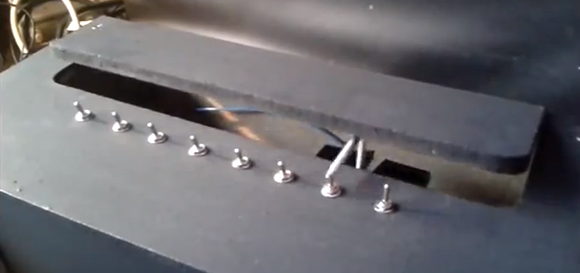Here’s the most useless machine we’ve seen so far. It comes from the workshop of [forn4x] and happily turns itself off whenever any one of its eight switches are flicked to the on position.
The build began when [forn]’s Canon 850i printer gave up the ghost because of a broken print head. All the other electronics and mechanics were still salvageable, so it was decided to turn this printer into something a little more useless.
The printer used a regular DC motor with an optical encoder to move the print head. [forn] easily found the schematics for this optical sensor, because of the TTL output was able to read out the position of the slider. The rest of the build is an ATMega8, a servo, and an octet of toggle switches. [forn] has been able to get the accuracy of the servo-controlled arm down to about 0.1 mm, more than enough to accurately turn all its switches off.
You can see [forn]’s most useless machine in action after the break.
















